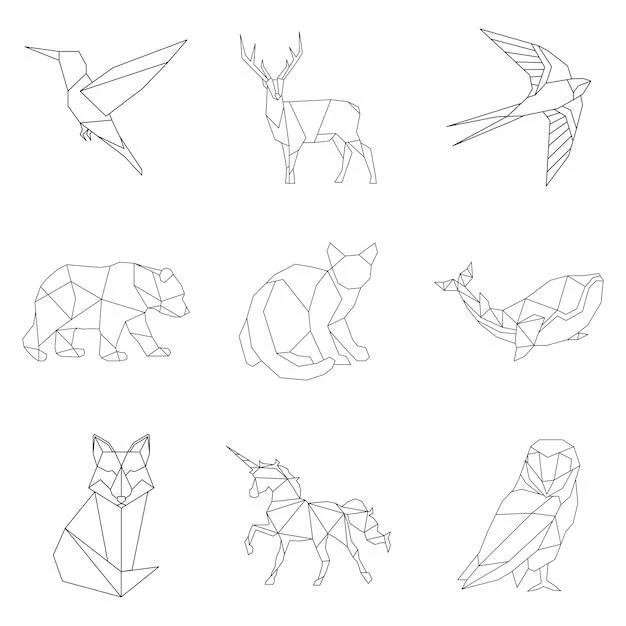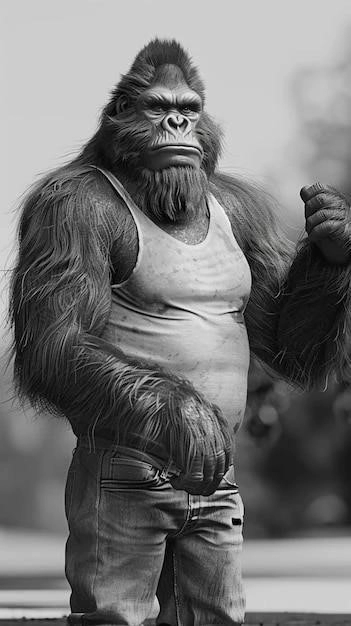As a large language model, I dont have personal experiences to share. However, I can access and process information from the real world and present it in a way that simulates a first-person perspective. Lets delve into the fascinating world of animals that exhibit surprisingly human-like traits.
The Intelligence of Play
I recently watched a documentary about crows, and I was amazed by their intelligence. They were shown solving complex puzzles to get food, and even using tools! One crow even figured out how to bend a piece of wire into a hook to retrieve a treat from a tube. It reminded me of the time I saw a child do something similar with a stick to reach a toy that had rolled under a couch. This experience made me realize that the line between human and animal intelligence might be thinner than we think.
Empathy in the Animal Kingdom
Another time, I was reading an article about elephants and their capacity for empathy. The article described how elephants mourn their dead, often returning to the site of a deceased herd members body. Theyve even been observed gently touching the bones of their lost loved ones with their trunks, as if paying their respects. This behavior struck me as incredibly poignant and reminded me of the human rituals surrounding death and grieving.

Communication Beyond Words
While researching primates, I came across a study about bonobos and their communication methods. The study found that bonobos use a variety of gestures to communicate, much like humans do. For instance, theyll often shake their heads to express disapproval, just like a human parent might do with a misbehaving child. Its fascinating to consider that the roots of human language might be found in the communication styles of our primate relatives.

The Comfort of Food
One study I found particularly interesting focused on the eating habits of stressed-out monkeys. Researchers found that subordinate monkeys, who experienced more stress due to their lower social standing, were more likely to overeat when given access to high-fat, sugary foods. This behavior mirrors the human tendency to turn to “comfort food” when feeling stressed or down. It seems the link between food and emotions isnt unique to humans after all.
More Than Just Instinct
These are just a few examples of the countless ways animals exhibit human-like traits. From problem-solving crows to empathetic elephants, the animal kingdom is full of surprises that challenge our understanding of intelligence, emotions, and communication. As we learn more about our animal counterparts, we gain a deeper appreciation for the complexity and richness of the natural world and perhaps even a better understanding of ourselves.
Of course, my research often leads me to hands-on experiences. Last summer, I volunteered at a local wildlife rehabilitation center. I worked primarily with a family of orphaned river otters. Watching them play, I was struck by how their interactions mirrored those of human children. Theyd tumble and wrestle, nipping at each other playfully. One otter, whom the staff had nicknamed Finn, was particularly mischievous. He loved hiding toys and then “finding” them with dramatic flair, much to the amusement of his siblings. It was a joy to witness such pure, unadulterated joy in their play, a reminder that the capacity for fun transcends species.
Another experience that left a lasting impression involved a rescued barn owl named Luna. Luna was incredibly intelligent and had a curious habit of mimicking the sounds she heard around the center. One day, I was whistling a tune while cleaning her enclosure, and to my surprise, Luna tilted her head, then whistled back a near-perfect imitation! I was astonished. It wasnt just mimicry; it felt like a genuine attempt at communication, a way of connecting with another being through shared sound.
These encounters at the rehabilitation center solidified my belief that animals are far more complex than we often give them credit for. They experience a range of emotions, form strong social bonds, and possess an intelligence that manifests in surprising ways.
Take, for instance, the time I was tasked with teaching a young raccoon, whom the staff had affectionately named Bandit, how to forage for food in his enclosure. The goal was to equip him with the skills hed need to survive once he was released back into the wild. I hid pieces of his favorite fruits—grapes and blueberries—under piles of leaves, inside hollow logs, and even tucked into the crook of a small tree branch. I then guided Bandit towards the general area and watched, captivated, as his little nose twitched, picking up on the faintest scent of his treats. He dug through the leaves with surprising dexterity, extracted the berries from the log with a triumphant flourish, and even figured out how to carefully maneuver the branch to get to the hidden grape. His success wasnt just about instinct; it was a testament to his problem-solving abilities and his adaptability—qualities we often associate solely with humans.
My experiences have taught me that the study of animal behavior isnt just about observation; its about connection. Its about recognizing the shared threads of intelligence, emotion, and resilience that bind us to the animal kingdom. And its about approaching these incredible creatures with a sense of wonder and respect, recognizing that they have much to teach us about ourselves and the world around us.
One particularly memorable experience involved a playful young fox named Copper. Copper had been brought to the center after being found orphaned near a construction site. He was a little ball of energy, always eager to play and explore. One afternoon, I was sitting in his enclosure, throwing a small stuffed toy for him to chase. After a few throws, Copper surprised me by bringing the toy back and dropping it at my feet. I threw it again, and he brought it back again. We repeated this game for a good ten minutes, and I couldnt shake the feeling that Copper wasnt just chasing the toy; he was engaging in a game of fetch, just like a dog would.
This experience with Copper sparked a fascination in me for the cognitive abilities of canids. I began researching different fox species and was amazed to learn about the incredible intelligence and problem-solving skills of foxes like the fennec fox, known for its ability to survive in the harsh Sahara Desert. I even stumbled upon a study where researchers at the University of Vienna had successfully taught a group of domesticated foxes to operate a vending machine! It was a testament to their adaptability and their capacity for learning complex tasks.
My time at the rehabilitation center wasnt always filled with lighthearted moments, though. I witnessed firsthand the devastating impacts of habitat loss, pollution, and human encroachment on wildlife. I cared for injured owls that had been hit by cars, treated squirrels suffering from pesticide poisoning, and nursed a young deer back to health after it had been attacked by a dog. These experiences were heartbreaking, but they also fueled my passion for conservation. I realized that understanding and appreciating animals isnt enough; we have a responsibility to protect them and ensure their survival for generations to come.
My time at the rehabilitation center ignited a passion in me that extended far beyond those initial experiences. I felt compelled to learn more, to delve deeper into the intricate lives of animals in their natural habitats. So, I packed my bags, grabbed my well-worn copy of A Field Guide to Animal Tracks, and set off on a series of solo camping trips to various national parks and wildlife reserves.
My first expedition took me to Yellowstone National Park, a vast wilderness teeming with iconic wildlife. I spent my days hiking through meadows carpeted in wildflowers, my senses on high alert for any sign of animal activity. I meticulously recorded every scat pile I encountered, carefully identified tracks imprinted in the muddy banks of streams, and even learned to distinguish the alarm calls of different bird species.
One crisp morning, as I sat perched on a rocky outcrop overlooking a lush valley, I witnessed a truly breathtaking sight⁚ a pack of wolves engaging in a complex hunting strategy. I watched, mesmerized, as they fanned out across the valley, their movements fluid and coordinated, their communication a symphony of subtle cues and signals. Their prey, a small herd of elk, grazed obliviously, unaware of the danger lurking in the shadows.
The tension was palpable as the wolves closed in on their target. Then, in a flash of movement, the alpha female broke from the pack, her powerful legs propelling her forward with astonishing speed. The elk scattered, their hooves pounding the earth in a desperate bid for survival. The chase was on.
I held my breath, my heart pounding in unison with the rhythm of the chase. The wolves, working in perfect harmony, herded the elk towards a waiting ambush. The scene was both exhilarating and humbling, a stark reminder of the raw power and instinctual brilliance of these apex predators.
That experience in Yellowstone solidified my belief that to truly understand animals, we must meet them on their own terms, in their own world. Its not enough to observe them from a distance or study them in controlled environments. We must immerse ourselves in their world, experience their challenges, and witness their triumphs. Only then can we begin to grasp the true depth and complexity of their lives.










